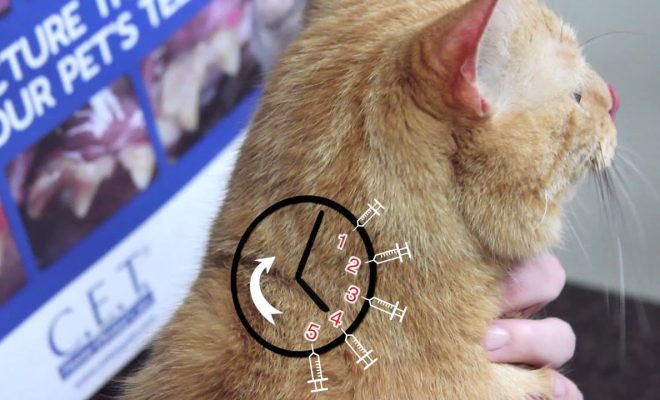How to Administer Insulin to a Cat

Introduction:
Administering insulin to a cat can seem like a daunting task, but it is crucial for managing diabetes in our feline friends. With proper care, guidance, and practice, you can become skilled at giving insulin injections and ensure the well-being of your cat. This article provides step-by-step instructions on how to administer insulin to a cat safely and effectively.
1. Gather supplies:
Before beginning the process, gather the following supplies:
– Insulin vial
– Insulin syringe
– Rubbing alcohol or an alcohol swab
– A small treat for rewarding your cat
2. Store and handle insulin properly:
Ensure that your cat’s insulin is stored according to the manufacturer’s instructions, typically in the refrigerator but not frozen. When you’re ready to administer it, gently roll the insulin vial between your hands to mix it well without causing bubbles.
3. Prepare the injection site:
Choose an area on your cat’s body where there is loose skin, such as between the shoulder blades or near the hip bones. Clean the chosen area with rubbing alcohol or an alcohol swab and allow it to air dry.
4. Prepare the insulin syringe:
With clean hands, remove the cap from the syringe and insert the needle into the insulin vial. Draw up the prescribed dose of insulin by pulling back on the plunger slowly. Make sure there are no air bubbles in the syringe; if any are present, tap gently on the side of the syringe until they rise to the top and push them back into the vial.
5. calming your pet_ONCE:HEADER_LEVEL1_>
Help your cat feel calm and secure during this process by speaking softly and gently petting them. Having another person help you hold your cat may make it easier for both you and your furry companion.
6. Administering the insulin:
Hold the syringe with one hand, and pinch a fold of skin between your cat’s shoulder blades or near the hip bones with your other hand. Insert the needle into the skin fold at a 45-degree angle, ensuring that it doesn’t puncture through both layers of skin. Slowly push the plunger to administer the insulin.
7. Aftercare:
Once you’ve administered the injection, remove the needle from your cat’s skin and dispose of it safely in a sharps container. Praise and reward your cat with a treat for their cooperation during the process.
8. Monitor your cat’s condition:
Keep an eye on your cat after administering insulin injections. If you notice any adverse effects such as lethargy, vomiting, or seizures, contact your veterinarian immediately.
Conclusion:
Administering insulin to a cat takes patience and practice, but with consistent effort, you’ll be able to ensure your cat gets the care it needs. Always consult your veterinarian for personalized advice about managing your cat’s diabetes and administering insulin injections.






